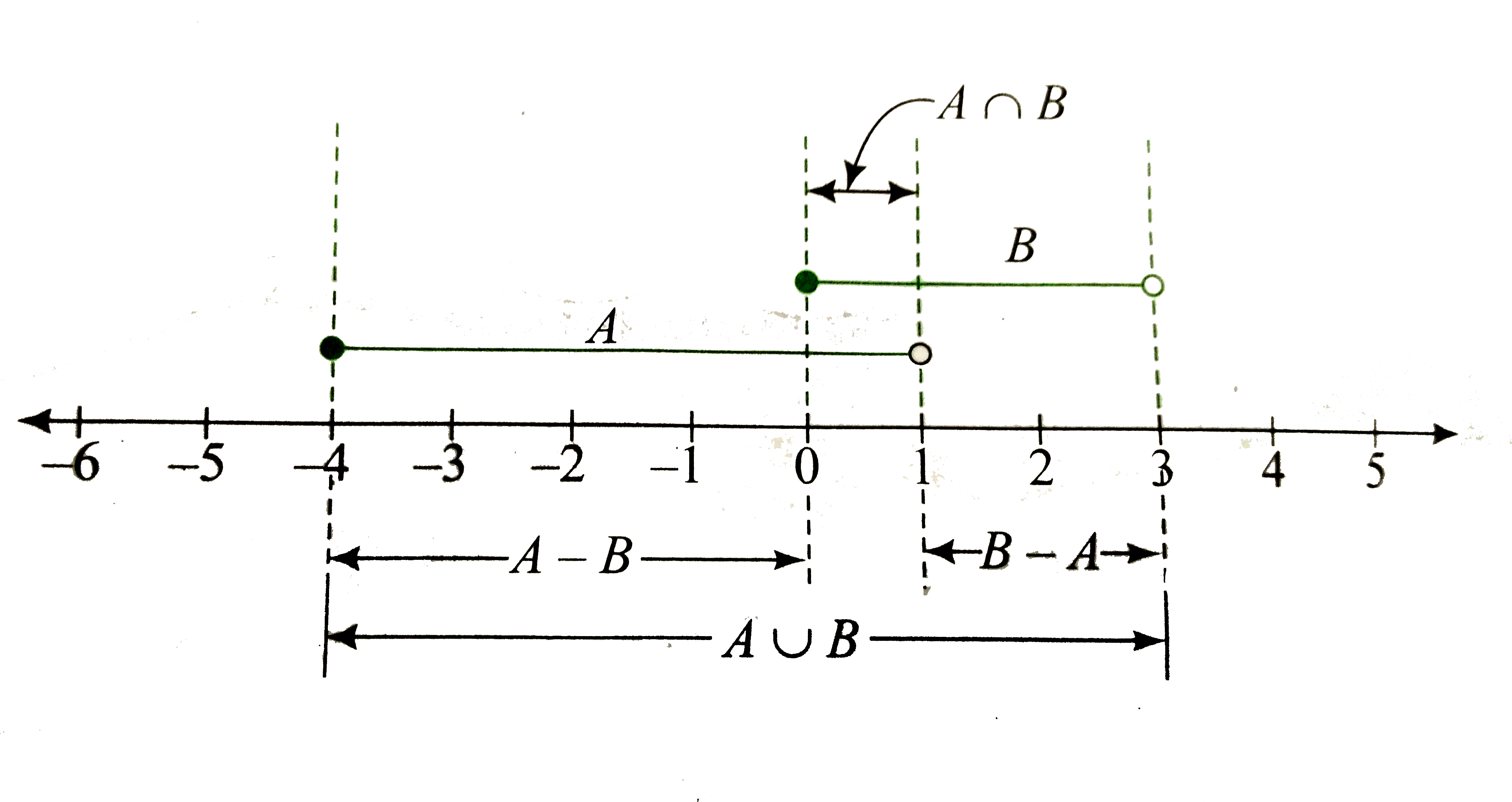If A= [-4 , 1 ) and B =[ 0,3), then find the following
(A) A∩B(b)A∪B,(c)A−B(d)B−A(e)(A∪B)(f)(A∩B)

(a) A∩B=[0,1)
( b) A∪B=[−4,3)
( c) A−B=[−4,3)
( d) B−A={1,3)
( e) (A∪B)'=(∞,−4)∪[3,00)
(f) (A∩B)'=(−∞,0)∪(1,∞)
Topper's Solved these Questions
- SET THEORY AND REAL NUMBER SYSTEM Book:CENGAGEChapter:SET THEORY AND REAL NUMBER SYSTEM Exercise:Exercise 1.2
Explore 8 Videos
- SET THEORY AND REAL NUMBER SYSTEM Book:CENGAGEChapter:SET THEORY AND REAL NUMBER SYSTEM Exercise:Exercise 1.3
Explore 13 Videos
- SET THEORY AND REAL NUMBER SYSTEM Book:CENGAGEChapter:SET THEORY AND REAL NUMBER SYSTEM Exercise:Archieves
Explore 1 Video
- SEQUENCE AND SERIESBook:CENGAGEChapter:SEQUENCE AND SERIESExercise:Question Bank
Explore 36 Videos
- SETS AND RELATIONSBook:CENGAGEChapter:SETS AND RELATIONSExercise:Question Bank
Explore 15 Videos
Similar Questions
Knowledge Check
For sets (A∪B)∪(A∩B) equals
AA'BB'CADNone of theseIf A={1,2,4}andB={2,3,5}, then the number of element in (A∩B)×(A∪B).
A2B3C5D8
If A={1,2,3,4},B={3,4,5},C={1,5,6}, then findof the following :
(i) A∪B
(ii) A∪(B∩C)
(ii) A−B
(iv) A−(B∪C).
View SolutionIf n (A) = 4 , n (B) = 6 , and n (A∪B)=8 , then find n(A∩B) .
View SolutionConsider the following sets:
A= set ofnaturai numbers which are multiples of 2
B= set ofnaturai numbers which are multiples of 3
C= set ofnaturai numbers which are multiples of 5
Then find the following set
(i)A∪B(ii)B∪C(iii)A−B(iv)B−C(v)A∩C<br>(vi)A∩B∩C(vii)(A∪B)−C
View SolutionIf U={11,12,13,14,....,20},A={11,12,13,14}andB={14,16,18,20}, then find each of the following :
(i) A,∩B'
(ii) A'∪B'
(iii) (A∪B)'
(iv) (A∩B)'
(v) A'−B'
(vi) B−A'.
View SolutionProve (A∩B)'=(A'∪B')
View SolutionIf A{1,2,3},B={3,4}andC={4,5,6}, then find the each of the following :
(i) A∩(B∪C)
(ii) (A−B)∪C
(iii) (A∪B)−C
(iv) (A∩B)∪C.
View Solution

